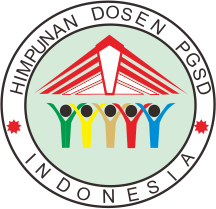DEVELOPMENT OF CANVA-BASED INTERACTIVE E-BOOK AND BOOK CREATOR USING THE RADEC LEARNING MODEL TO SUPPORT CREATIVE THINKING SKILLS
DOI:
https://doi.org/10.30595/dinamika.v15i1.17407Keywords:
interactive e-book, RADEC learning models, creativity, thinking skill.Abstract
The involvement of technology in 21st century learning is indispensable at every level of education. Teachers can involve digital learning media to support the process of teaching and learning activities. Digital-based learning media such as interactive e-books can be used as learning media that can be used in 21st century learning. In addition to digital-based learning media, the learning model that can be applied is an innovative learning model. The RADEC learning model is one of the learning models that can be applied in current learning. This study aims to develop an interactive e-book through the RADEC learning model, and determine the feasibility of an interactive e-book through the RADEC learning model. This research is a research and development or Research and Development ADDIE model. This study obtained the feasibility results from the validation of material experts, validation of linguists, and validation of media experts. The results of the validation of material experts, linguists, and media experts get scores in the very valid category for use. The results of student responses regarding product trials get scores in the very interesting category for students to use in the learning process. The results of the group creativity assessment are very interesting and can increase the creativity of students. Based on these results, it can be concluded that interactive e-books through the RADEC learning model are very valid and feasible to be used in learning and can increase students' creativity.
References
[1] Embong, AM, Azelin, MN, Mohd Hashim, H., & H Shaari, Z. (2012). E-Books as Textbooks in the Classroom. Procedia - Social and Behavioral Sciences , 47, 1802 – 1809
[2] Areerachakul, S. (2015). Using Electronic Medias for Science Mathematics and English in School under Office of the Basic Education Commission, Thailand. Procedia-Social and Behavioral Sciences , 197 , 1558-1563.
[3] Kouis, D., & Konstantinou, N. (2014). Electronic textbooks advantages and challenges for the Hellenic higher education and publishing community. Library Review , 63(6/7), 531-543.
[4] Irawan, Z., Sari, ME, Setyoningrum, MU (2011). Analysis of the Implementation of the Electronic School Book Policy (BSE) of the Ministry of National Education in Yogyakarta City Senior High Schools. Pelita-Journal of Student Research UNY, 6(1), 1-13.
[5] Hasbiyati, H., & Khusnah, L. (2017). Application of E-Book Media with the Epub Extension to Increase Middle School Students' Interest and Learning Outcomes in Science Subjects. Journal of Science Pen , 4(1), 16-21.
[6] Astuti, D., & Santosa, D. (2017, October). E-Book for problem based learning to improve student learning outcomes. In International Conference on Teacher Training and Education 2017 (ICTTE 2017) (pp. 403-410). AtlantisPress.
[7] Aprillianti, P., & Wiratsiwi, W. (2021). PENGEMBANGAN E-BOOK DENGAN APLIKASI BOOK CREATOR PADA MATERI BANGUN RUANG UNTUK SISWA KELAS V SEKOLAH DASAR: Studi kasus di SD Negeri Sugihan 01 Kelas V. Prosiding SNasPPM, 6(1), 80-88.
[8] Andini, SR, Fitria, Y. 2021 . The Effect of the RADEC Model on Thematic Learning on Learning Outcomes of Elementary School Students. BASICDU journal . 5(3), 1435 – 1443
[9] Sopandi, W. (2017). the Quality Improvement of Learning Processes and Achievements Through the Read-Answer-Discuss-Explain-and Create Learning Model Implementation. Proceedings of the 8th pedagogy international Seminar 2017, 8, 132-139.
[10] Sopandi, W., Pratama, YES, & Handayani, H. (2019). Socialization and Workshop on the Implementation of the RADEC Learning Model for Elementary and Secondary Education Teachers, Pedagogy : Journal of Education , 8 (1), 19-34
[11] Branch, RM 2009). Instructional Design-The ADDIE Approach . New York: Springer
[12] Sudijono, A. 2008. Introduction to Educational Statistics . Jakarta: Raja Grafindo Persada
[13] Riduwan. (2011). Basics of Statistics . Bandung: Alphabet
[14] Pratama, YES, Sopandi, W., Hidayah, Y. 2019. RADEC Learning Model (Read- Answer-Discuss-Explain And Create): The Importance of Building Critical Thinking Skille in Indonesian Context, International Journal for Educational and Vocational Studies , 1(2), 109–115
[15] Pratama, YES, Sopandi, W., Hidayah, Y., Trihastuti, M. (2020). The Influence of the RADEC Learning Model on Higher Level Thinking Skills of Elementary School Students, JINoP State University of Malang , 6 (2), 191 - 203
[16] Fatimah, Shah Ahmad, Hasliana Lili. 2021 . Picture Paper Learning Media (TWIN) as Learning Media Innovation During the Pandemic, SIPISSANGNGI Journal of Community Service , 1 (1), 71 - 75
Downloads
Published
How to Cite
Issue
Section
License
Authors who publish with this journal agree to the following terms:
Authors retain copyright and grant the journal right of first publication with the work simultaneously licensed under a Creative Commons Attribution License that allows others to share the work with an acknowledgement of the work's authorship and initial publication in this journal.
Authors are able to enter into separate, additional contractual arrangements for the non-exclusive distribution of the journal's published version of the work (e.g., post it to an institutional repository or publish it in a book), with an acknowledgement of its initial publication in this journal.
Authors are permitted and encouraged to post their work online (e.g., in institutional repositories or on their website) prior to and during the submission process, as it can lead to productive exchanges, as well as earlier and greater citation of published work (See The Effect of Open Access).

Dinamika Jurnal Ilmiah Pendidikan Dasar is licensed under a Creative Commons Attribution 4.0 International License.













